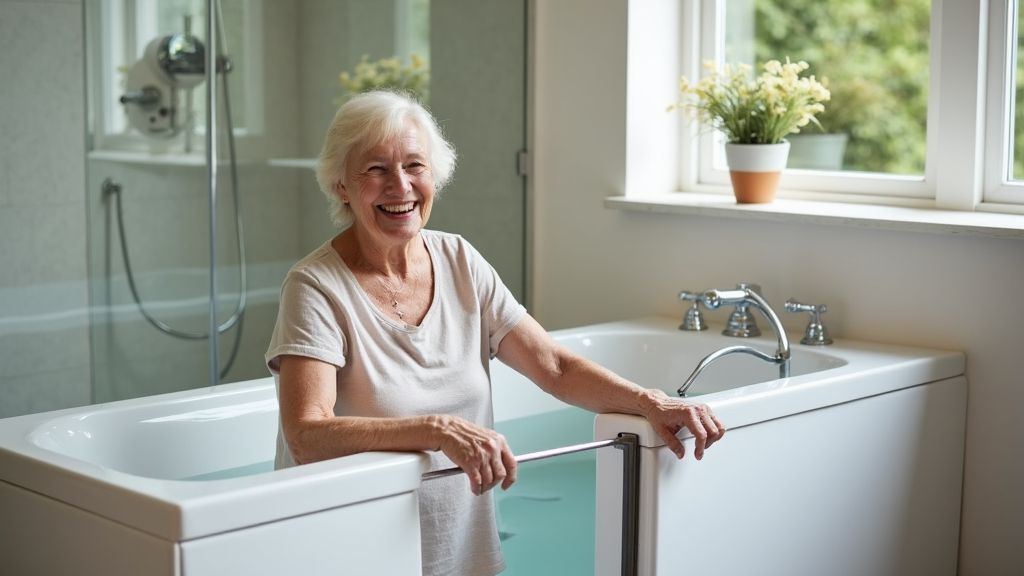In the labyrinth of health care coverage, finding assistance for mobility-enhancing equipment like walk-in tubs can seem daunting. However, there’s a silver lining for Medicare beneficiaries seeking convenience and safety in their daily hygiene routine. Dive into the underexplored realm where Medicare meets the modern walk-in tub, and learn how this combination can enhance quality of life.

The Hidden Key: Medicare's Take on Walk-In Tubs
Despite the widespread need, Medicare's stance on walk-in tubs isn't as straightforward as one might assume. Medicare doesn’t typically cover most bathroom fixtures; however, exceptions exist that can open the door to coverage. Typically, Original Medicare (Part A and Part B) doesn’t reimburse these costs as they are not considered 'durable medical equipment.' Nevertheless, by venturing into Medicare Advantage plans, some find that coverage is possible. These plans, optimized for specific health needs, may include benefits that Traditional Medicare does not encompass. Understanding the details hidden within your Medicare Advantage plan could unveil a path to financial assistance for installation.
Navigating the Waters: Eligibility and Criteria
To increase the likelihood of Medicare covering a walk-in tub, understanding certain eligibility criteria is crucial. For starters, a case must be made for medical necessity, typically through a doctor's recommendation or prescription. Such recommendations often stem from conditions like severe arthritis or risks of falls, which justify the tub's safety benefits. John Matthews, a Medicare counselor, notes, 'It’s essential that patients advocate for themselves and provide comprehensive medical histories that align their need with potential coverage.' While this doesn’t guarantee approval, it lays the groundwork for convincing insurers of the vital role a walk-in tub can play in daily living and accident prevention.
Beyond the Basics: Exploring Supplemental Options
For those whose walk-in tub remains out of reach via traditional Medicare paths, additional assistance options may provide a lifeline. Medicaid or state-funded programs can sometimes fill the gaps that Medicare leaves bare. On occasion, grants and loans for home modifications aimed at enhancing accessibility are available for individuals with disabilities. Additionally, various veteran programs provide robust support for those who have served, offering benefits that cover home modifications—tubs included. Exploring these supplemental avenues can yield opportunities that drastically reduce out-of-pocket costs, promoting greater access to these life-enhancing installations.
Valued Investments: The Benefits Outweighing Costs
Despite the intricate process of aligning Medicare with walk-in tubs, their benefits are profound. Anne Jackson, a recent beneficiary of a covered walk-in tub, expresses, 'The independence it has restored is beyond monetary value. It’s not just a bath; it’s a rejuvenated fearlessness in my daily routine.' These tubs offer more than comfort—they provide safety, reducing the risk of slips and falls, which are prevalent hazards in conventional bathrooms. Moreover, the therapeutic value, with features like hydrotherapy and integrated safety seats, can contribute to improved wellness and peace of mind. The upfront work of navigating insurance specifics is offset by the long-term advantages and safety assurance they provide.
Your Next Steps: Taking Action Towards Comfort
To proceed with acquiring a walk-in tub with the potential aid of Medicare, begins with assessing your current health plan and consulting with health professionals to advocate for medical necessity. Documenting your healthcare history and obtaining necessary prescriptions are crucial steps. Simultaneously, explore various Medicare Advantage plans, supplemental options, and seek advice from professionals in senior health and home care. By preparing comprehensively, you position yourself strategically to harness available resources, transforming the dream of a safe and independent bathing experience into reality. Remember, persistence and thorough preparation are your allies in navigating the confluence of healthcare and home comfort.